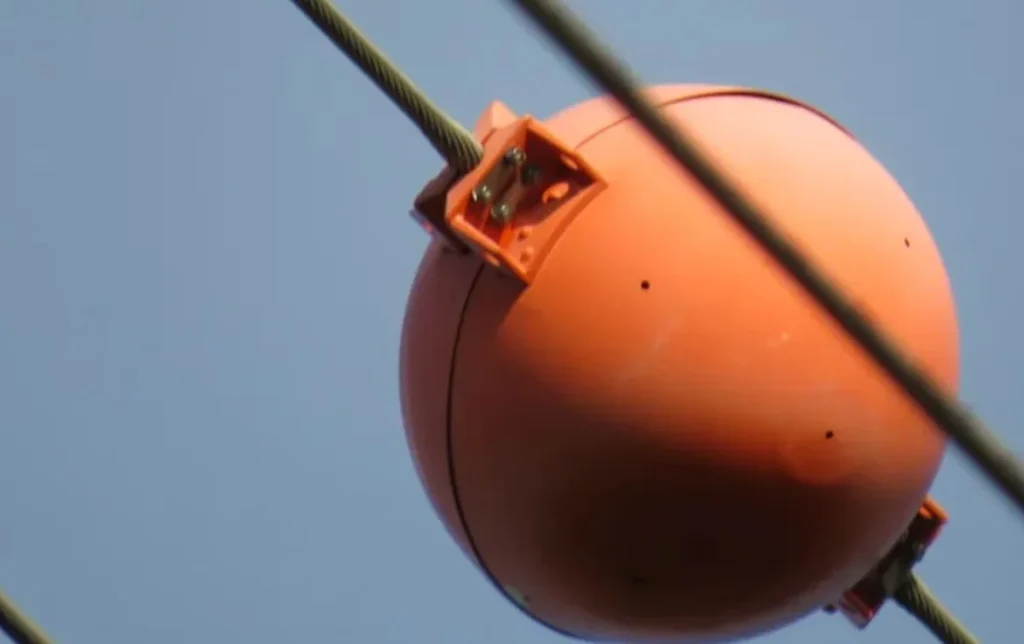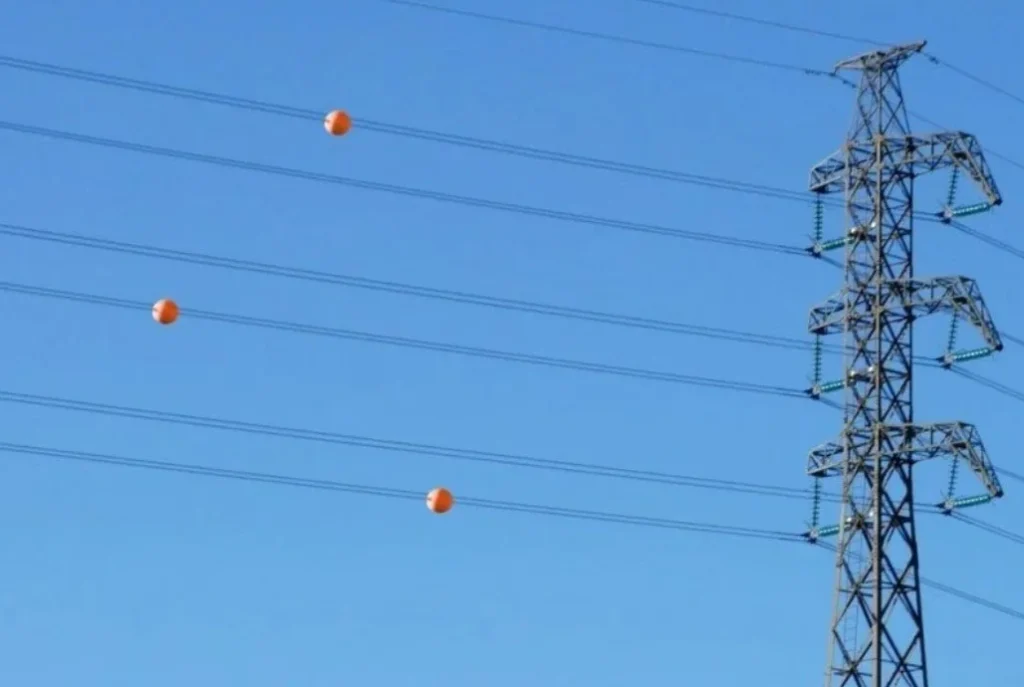Why Are There Bright Colored Balls on Power Lines? The Real Reason Behind These Eye-Catching Markers
Have you ever looked up and noticed bright, colorful balls hanging on power lines? If so, you might have wondered what these peculiar spheres are doing there. They might seem like random decorations, but they actually serve an essential purpose. These objects are known as aerial marker balls, and they play a critical role in aviation safety. Let’s delve into why these colorful balls are often found on power lines and how they help protect both aircraft and people on the ground.
Keeping the Skies Safe with Visibility Markers
The colorful balls you see on power lines aren’t there just for aesthetics. These aerial marker balls, also referred to as visibility markers, are crucial safety tools designed to keep our skies secure. The primary purpose of these markers is to alert pilots of low-flying aircraft about the presence of potentially dangerous power lines. Think of them as bright, floating road signs in the sky that help steer pilots away from hazards.
Helping Pilots Avoid Potential Dangers
Imagine a situation where a small airplane or helicopter is flying low, perhaps near canyons, riverbanks, or close to airports. These low-altitude flights are particularly risky because power lines are often hard to see from a distance. Without any warning, these wires could pose a serious danger, especially in areas where pilots are not expecting obstacles. That’s where these marker balls come into play. The Federal Aviation Administration (FAA) mandates the installation of these markers in high-risk areas to enhance visibility and prevent accidents.
These markers are especially important in regions where aircraft fly low over water, valleys, or near airstrips. The bright aerial markers provide a clear visual cue, helping pilots navigate safely and avoid collisions with power lines. By increasing visibility, these simple devices can potentially save lives and prevent catastrophic accidents.
Why Bright Colors Matter
You might have noticed that these marker balls come in striking colors like orange, white, and yellow. But why such vivid hues? The answer lies in visibility. The colors are chosen to stand out against different backgrounds, whether it’s a clear blue sky, dense forest, or urban landscape. This ensures that pilots can spot the markers from a distance, even in less-than-ideal weather conditions. Bright colors like orange and yellow are particularly effective in catching a pilot’s attention, helping them quickly identify and avoid obstacles.

The Practical Choice of Plastic
Have you ever wondered what material these marker balls are made of? The answer is plastic, and it’s not just for cost-efficiency. Plastic is used because it doesn’t conduct electricity or heat, making it a perfect insulator. This is crucial since these markers are often in close proximity to high-voltage power lines. By using plastic, the aerial markers ensure safety without interfering with the power lines’ operation. Plus, plastic is durable, lightweight, and weather-resistant, allowing these balls to withstand various environmental conditions without deteriorating quickly.
Understanding the Technical Specifications: Size and Weight
If you’ve ever seen these marker balls up close, you might be surprised to learn that they come in a range of sizes, typically between 20 and 36 inches in diameter. Despite appearing lightweight, they are actually quite robust, weighing anywhere from 11 to 17 pounds. This weight is carefully balanced to ensure they stay securely attached to power lines while remaining strong enough to endure strong winds and harsh weather. Their design is optimized for stability, making them both functional and long-lasting.
The Fascinating History of Aerial Marker Balls
These colorful markers have an intriguing origin story. It all began about 50 years ago, back in the early 1970s. The idea was born out of necessity following a near-miss incident involving Winthrop Rockefeller, then the governor of Arkansas, and Edward Holland, the head of the Arkansas Department of Aeronautics. During a routine flight, as their plane was preparing to land, Rockefeller noticed power lines dangerously close to the aircraft. Alarmed by how difficult they were to see, he realized the need for a system that would make these obstacles more visible to pilots.
This experience led to the development and widespread use of aerial marker balls. Since then, these markers have become standard safety measures across the United States and many other parts of the world, helping pilots safely navigate their flights.
How Aerial Marker Balls Are Installed
Installing these marker balls is no small feat. Utility workers need specialized equipment to attach them securely to power lines. The process often involves helicopters or crane trucks to reach the high-voltage lines safely. Once in place, these balls remain fixed, requiring minimal maintenance. Thanks to their durability, they can last for years, even in harsh weather conditions. This low-maintenance solution has made them an invaluable part of infrastructure safety, especially in areas prone to low-flying aircraft.
More Than Just Safety: Additional Uses of Aerial Marker Balls
While the primary purpose of these marker balls is to protect pilots and aircraft, they also serve other functions. For instance, they can help utility workers identify power lines from a distance during inspections, repairs, or natural disasters. In rural areas, where power lines stretch for miles, these markers can prevent accidents involving tall construction equipment or even adventurous hikers.

Additionally, the use of marker balls has expanded beyond aviation safety. They are sometimes used on tall structures like radio towers and wind turbines to enhance visibility and prevent collisions.
Conclusion: A Simple Yet Effective Solution
The colorful aerial marker balls that dot power lines may seem like an unusual sight, but their purpose is incredibly important. By acting as visual guides, they protect not only pilots but also the communities below. These small, colorful spheres are a testament to how simple solutions can make a big difference in ensuring safety. The next time you see these bright balls hanging from power lines, you’ll know they are there to protect lives, both in the air and on the ground.





